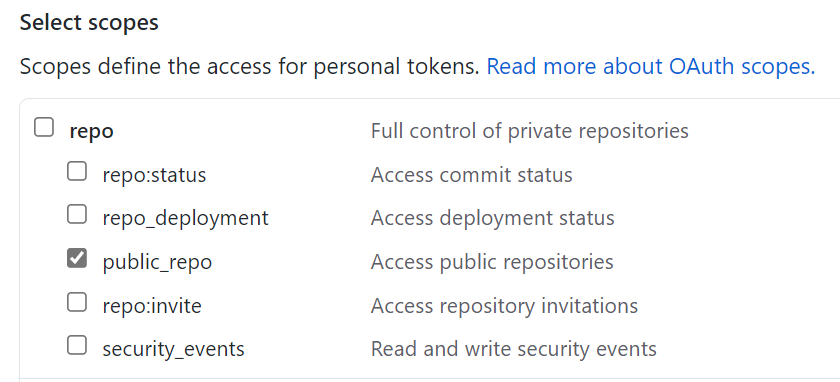This repository contains the source code for the Windows Package Manager Manifest Creator. The Windows Package Manager Manifest Creator is designed to help generate or update manifest files for the Community repo.
Windows Package Manager Manifest Creator is an Open Source tool designed to help developers create, update, and submit manifest files to the Windows Package Manager repository.
Developers will use this tool to submit their applications for use with the Windows Package Manager.
For your convenience, WingetCreate can be acquired a number of ways.
The Windows Package Manager Manifest Creator is available for download from the winget-create repository. To install the package, simply click the the MSIX file in your browser. Once it has downloaded, click open.
winget install wingetcreateWingetCreate has the following commands:
| Command | Description |
|---|---|
| New | Command for creating a new manifest from scratch |
| Update | Command for updating an existing manifest |
| Submit | Command for submitting an existing PR |
| Token | Command for managing cached GitHub personal access tokens |
| Settings | Command for editing the settings file configurations |
| Cache | Command for managing downloaded installers stored in cache |
| -? | Displays command line help |
Click on the individual commands to learn more.
You can use WingetCreate to update your existing app manifest as part of your CI/CD pipeline. For reference, see the final task in this repo's release Azure pipeline.
Unfortunately, we can't use the msixbundle in a standard Azure Pipeline pool. Instead, use the standalone exe, the latest version of which can be found at https://aka.ms/wingetcreate/latest, and the latest preview version can be found at https://aka.ms/wingetcreate/preview, both of these require .NET to be installed on the build machine.
If .NET isn't already installed, you can use https://aka.ms/wingetcreate/latest/self-contained or https://aka.ms/wingetcreate/preview/self-contained, which has .NET built-in, but is a larger download.
When using either the framework-dependent or self-contained exe, make sure your build machine has the Microsoft Visual C++ Redistributable for Visual Studio already installed. Without this, the standalone WingetCreate exe will fail to execute and likely show a "DllNotFoundException" error.
Then simply add a new powershell task to download the exe, and run it to update your manifest. It's recommended to not hardcode your PAT in your script, but instead use a secret pipeline variable
- powershell: |
iwr https://aka.ms/wingetcreate/latest -OutFile wingetcreate.exe
.\wingetcreate.exe update <packageId> -u $(packageUrls) -v $(manifestVersion) -t $(GITHUB_PAT)
displayName: Update package manifest in the OWC
The CLI also supports creating or updating manifests with multiple installer URLs. You can either create new manifests with multiple installer nodes using the New Command or update existing manifests with multiple installer URLs using the Update Command.
When creating your own GitHub Personal Access Token (PAT) to be used with WingetCreate, make sure the following permissions are selected.
- Select the public_repo scope to allow access to public repositories
- (Optional) Select the delete_repo scope permission if you want WingetCreate to automatically delete the forked repo that it created if the PR submission fails.
- Windows 10 1709 (16299) or later
- Visual Studio 2019
- Or use winget to install it ;) (although you may need to adjust the workloads via Tools->Get Tools and Features...)
- Git Large File Storage (LFS)
- The following workloads:
- .NET Desktop Development
- Universal Windows Platform Development
Open winget-create\src\WingetCreateCLI.sln in Visual Studio and build. We currently only build using the solution; command line methods of building a VS solution should work as well.
Running unit and E2E tests are a great way to ensure that functionality is preserved across major changes. You can run these tests in Visual Studio Test Explorer.
-
Fill out the test parameters in the
WingetCreateTests/Test.runsettingsfileWingetPkgsTestRepoOwner: The repository owner of the winget-pkgs-submission-test repo. (Repo owner must be forked from main "winget-pkgs-submission-test" repo)WingetPkgsTestRepo: The winget-pkgs test repository. (winget-pkgs-submission-test)GitHubApiKey: GitHub personal access token for testing.- Instructions on how to generate your own GitHubApiKey.
- Direct link to GitHub Personal Access Tokens page.
GitHubAppPrivateKey: Leave blank, this is only used by the build server.
-
Set the solution wide runsettings file for the tests
- Go to
Testmenu >Configure Run Settings->Select Solution Wide runsettings File-> Choose your configured runsettings file
- Go to
This project welcomes contributions and suggestions. Most contributions require you to agree to a Contributor License Agreement (CLA) declaring that you have the right to, and actually do, grant us the rights to use your contribution. For details, visit https://cla.opensource.microsoft.com. More information is available in our CONTRIBUTING.md file.
When you submit a pull request, a CLA bot will automatically determine whether you need to provide a CLA and decorate the PR appropriately (e.g., status check, comment). Simply follow the instructions provided by the bot. You will only need to do this once across all repos using our CLA.
This project has adopted the Microsoft Open Source Code of Conduct. For more information, please refer to the Code of Conduct FAQ or contact opencode@microsoft.com with any additional questions or comments.
The wingetcreate.exe client is instrumented to collect usage and diagnostic (error) data and sends it to Microsoft to help improve the product.
If you build the client yourself the instrumentation will not be enabled and no data will be sent to Microsoft.
The wingetcreate.exe client respects machine wide privacy settings and users can opt-out on their device, as documented in the Microsoft Windows privacy statement here.
In short to opt-out, go to Start, then select Settings > Privacy > Diagnostics & feedback, and select Basic.
You can also opt-out of telemetry by configuring the settings.json file and setting the telemetry.disabled field to true. More information can be found in our Settings Command documentation
See the privacy statement for more details.
